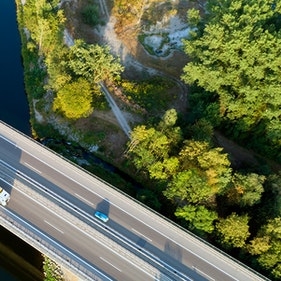Economic losses from severe weather events worldwide have soared to $ 1.4 trillion in the last ten years, up from $387 billion in the 1980s, according to the World Economic Forum’s Global Risks 2013 report. More frequent "100-year" storms due to climate change are one reason these costs are climbing. The migration of people to disaster-prone areas is compounding the problem. More than one billion people live in low-lying coastal areas, especially in Asia. In England, new construction in the Thames Gateway flood plain accounts for 11 percent of overall new build. In the United States, the population of hurricane-prone Florida has jumped six-fold in the last 60 years.

The portion of natural disaster relief costs shouldered by cash-strapped governments and international agencies has also been escalating. When Hurricane Diane struck New Jersey in 1955, government bore only six percent of the repair costs. By contrast, government picked up 69 percent of the aid required in 2008 when Hurricane Ike ripped through Louisiana to Florida, according to Wharton’s Risk Management and Decision Processes Center. People increasingly expect governments to supply financial aid in an extreme weather event, creating a huge unfunded liability for society as more people migrate to disaster-prone areas.
What can be done? Business leaders, together with political leaders and scientists, must make addressing climate change-related risks a priority. Here are three ideas for meeting the challenge:
Create more sustainable public sector programs for disaster relief. Governments underwrite the risk of natural catastrophes as much as insurance companies do. They should draw on the full set of tools available in the private sector to build a more disciplined approach to risk management and risk financing. Improved quantification of natural catastrophe risks would help governments to design targeted counterincentives to discourage people from moving into disaster-prone areas and to determine whether they have allocated enough funds to match existing exposures. Disaster relief programs could become more sustainable by charging individuals accurate actuarial rates for government insurance or at least by making the budget implications of implicit disaster relief promises more transparent. The focus on long-term funding will also be likely to stimulate the creation of pooling mechanisms that better balance natural catastrophe risks between the government and the private insurance markets.
Design public/private solutions for strategic infrastructure investment. A lot of private sector money is sitting on the sidelines. For example, less than one percent of pension funds’ $71 trillion in assets globally are allocated directly to infrastructure investments. Public and private stakeholders must collaborate on solutions that enable countries to marshal resources to build critical infrastructure to respond to disasters before they strike, and to mobilize coordinated assistance quickly to the point of shock by better sharing the risks involved. A recent Marsh & McLennan Companies survey of senior infrastructure industry leaders showed that 60 percent believe there is sufficient cash available to invest in environmentallysound infrastructure. The trouble: There is a lack of transparent models to guide sustainable infrastructure financing and development.
Sharpen private sector focus on the broader risks of extreme weather events. Most companies use insurance to dampen the cost of property damage caused by natural catastrophes. They should also consider the wider strategic and operational implications of more frequent natural catastrophes – for example, the benefits from supply chain diversification. Many players in the global technology industry are still reeling from the massive cutbacks in semiconductor production after the hurricane and earthquakes in Japan and Thailand. Locations for major operational centers should be carefully considered to balance the cost savings from concentrating operations with the benefits from limiting the risk of business interuption by spreading operations across geographic regions.
As with any health issue, the sooner colliding risks are addressed, the easier and less expensive it is to prevent their dangerous repercussions. We should get started now.

















